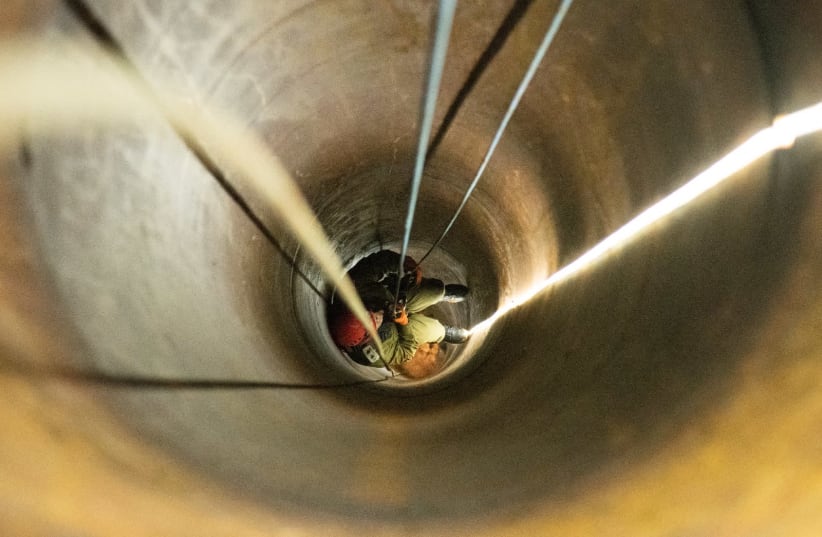The UN Interim Force in Lebanon has confirmed the existence of six tunnels in southern Lebanon, two of which violated the Blue Line and crossed into Israeli territory.
While UNIFIL said it could not determine who built the tunnels or when, they were recorded by UNIFIL in the region of Kafr Kila after UNIFIL engineers used verification tools such as laser range finders to confirm their existence.
Though the IDF reported the existence of six cross-border tunnels, UNIFIL was able to visit only five of them, as one was destroyed by Israel’s military before it notified UNIFIL.
UNIFIL is said to have requested to enter one disused brick factory across from Metulla, after Israel filled it with liquid concrete, but the government of Lebanon refused to give it access, as it was private property. The property was said to then be completely covered in blue tarpaulins within 24 hours of UNIFIL’s request.
Israel launched Operation Northern Shield in early December and destroyed at least five cross-border tunnels, either by explosives or by flooding with liquid concrete.
The tunnel underneath the brick factory was the first one to be discovered by the IDF and stretched some 40 meters into kiwi and apple orchards belonging to the community of Metulla. According to the military, the tunnel, which stretched a total of 200 meters, took Hezbollah around two years to build.
Hezbollah, the military said, chose the building because of its strategic location, in near proximity to a UNIFIL post and hidden behind the security wall and not visible from Israel.
The military discovered the location of the tunnel after Israeli jets noticed dozens of trucks going in and out of the building and driving some 10-12 kilometers to dispose of the material.
The IDF declared the end of the operation in mid-January, saying that it had “deprived Hezbollah of the unique offensive abilities it had built for years as part of its planned attack on Israeli territory,” and strengthened security along the northern border.
On Tuesday the military held a ceremony to mark the conclusion of the operation, in the presence of OC Northern Command Maj.-Gen. Yoel Strick; the commander of the 91st Division, Brig.-Gen. Rafi Milo; officers from the 91st Galilee Division and its regional brigades, defense battalions, and technological units; as well as intelligence officials, combat engineering troops, representatives of the civilian communities in the Galilee region, and others.
During the ceremony, Strick awarded a decoration to the Yahalom unit, the elite unit of the Combat Engineering Corps, for leading a continuous, professional and exceptional effort to locate and neutralize the tunnels.
“Many different forces played a part in the operation, and the cooperation between them contributed to fulfilling the mission with efficiency, power and determination,” the military said in a statement.
On Monday, UN Secretary-General Antonio Guterres expressed “deep concern” about Hezbollah’s tunnels, Lebanon’s Naharnet News reported. Guterres encouraged the Lebanese Armed Forces to “conduct all the necessary investigations on the Lebanese side,” in order to “confirm that the tunnels are no longer a security threat.”
According to the report, he also said that Hezbollah’s weapons could “jeopardize the stability of Lebanon and the region,” and called on UN member states to “carry out their duties” and stop supplying weapons and military equipment to nongovernment entities and individuals in Lebanon.
